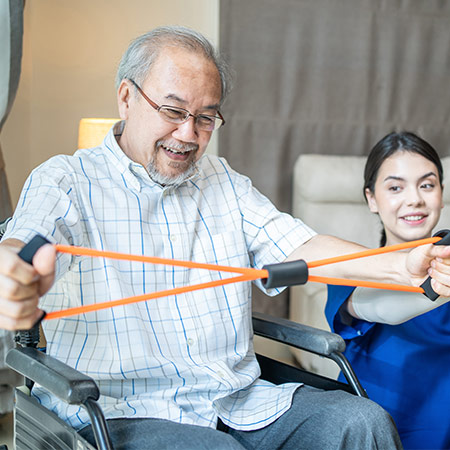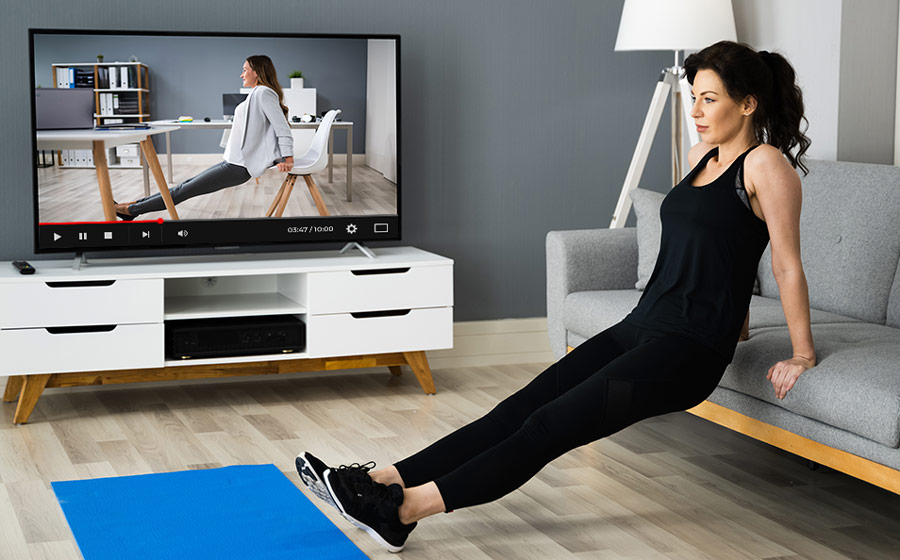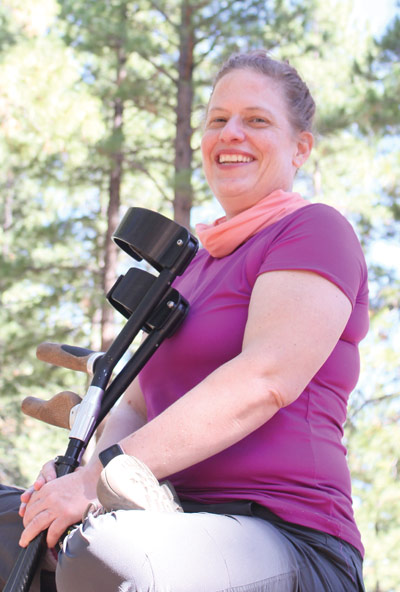Tips for Better Exercise with an Acute or Chronic Illness
As a patient with an acute or chronic illness, you probably spend a lot of time trying to cope with a life-changing diagnosis, manage insurance hassles, understand what infusion therapy is, and systematize this new health reality into an understandable world, all while feeling miserable. And you want to talk about exercise?
From the Oxford language dictionary, exercise is defined as “activity requiring physical effort, carried out to sustain or improve health or fitness”. It might sound like joining a gym or some type of activity that isn’t within reach, especially while being chronically ill. But the words “sustain or improve health” are the key for the definition of exercise.

As always, before beginning any exercise program, talk to your doctor for guidance
Many physical therapists specialize in management of certain conditions and could be your best resource and cheerleader. Some gyms even have “chronic disease specialists” for personal trainers.
Anderson and Durstine (2019) found that once a chronic illness is diagnosed, incorporating physical activity into the medical management plan leads to a higher quality of life and increases longevity. It is a non-invasive method of increasing health and vitality in addition to an existing treatment plan.

According to Brian Mastroianni of Everyday Health, exercise with a chronic or acute illness is not about a gaining a certain body type, aesthetic, or weight loss. It is for the “pleiotropic” benefits; meaning it has many positive benefits, including:
- Enhancing sleep
- Protect and improve brain function
- Promote a healthy immune system
- Improve or prevent depression
- Help fatigue
- Reduce pain
- Develop or maintain
- Bone
- Muscle
- Health
- Connective tissues
Many might be familiar with the rush that is experienced after a vigorous aerobic workout. This rush is caused by endorphins. Endorphins are “feel good” hormones released by the brain after putting the body through purposeful, physical stress, or a strenuous workout. Whether a patient was a marathon runner or sedentary prior to diagnosis, there will be a period where being strenuous isn’t feasible. Patients require a training period to “warm up” when starting out with the most basic exercise. The ability to move may fluctuate depending upon timing of infusions or taking a specialty medication. Writing down symptoms around exercise can help visualize what is working and what needs to be changed.

“I remind patients who are experiencing fatigue or low energy to count household chores as exercise. Laundry, cleaning, yard work, and caring for family members or pets are forms of exercise and get the body moving with the same benefits. Taking a few moments to intentionally stretch or breathe is exercise.”
– Jennifer “Lizzie” MacDonald
Patient Care Manger, PATH Program
Some people get better and experience significant recovery after their diagnosis and treatment. Others end up managing a serious disease for a lifetime. Chronic illness and treatment can cause changes to your physical appearance, weight, appetite, motivation, and many other aspects of life that weren’t thought of previously. Exercise will give patients autonomy in their health.
Exercise – in a broad sense – allows you to find a place where taking control of your health can be easy and fun! Perhaps you could ask family members or friends to encourage you to exercise to the best of your capabilities. Your support team might be interested in finding ways to manage their own stress as they help you figure out and define what your role is as a chronically or acutely ill person. This could become an enthusiastic project to embark upon together. If exercise is fun, patients are more likely to continue it. Accountability partners work wonders for motivation.
One of the most important aspects of exercise routines is making it a habit. Make sure a new exercise program is safe and within the limitations of your treatment, diagnosis, and medical history. There are several key components to making exercise a lasting change. These components may include:
- Setting up a dedicated and easily accessible place for exercise
- Keeping a journal of your activities
- Encouraging your support team to hold you accountable for your workout regimen.


The great thing about streaming services such as YouTube is that virtually any exercise can be done within a patient’s home. Do an internet search for appropriate exercises for your condition and see if any online classes are available. These can be live or prerecorded. Then, approach your doctor with questions. I was a little offended when it was suggested to try online senior fitness classes (I’m not a senior). But I took the recommendation and engaged in seated aerobics classes with shortened time so I could keep routine when I wasn’t moving well. The personal satisfaction of moving was good motivation to continue.
Exercise is about adapting. One day, a more energetic workout might feel good. Another day, the fatigue, pain, or other energy-consuming commitments will take priority. Move as you feel appropriate while remembering many days come with unpredictability. Rest is imperative in any exercise program.
In my personal chronic illness journey, incorporating adaptive exercise has been a healing and exciting time. I learned how my body can move with new limitations.
There is no doubt that we make lots of decisions in life which we later regret. But I promise you this: You will appreciate taking charge of your health through an exercise program – no matter how basic or complicated. Enjoy moving, seeing, and learning what you are capable of. Exercise promotes gaining mastery over your life, especially when chronic or acute illness can feel like control has been unfairly taken. Don’t compare your progress. Any movement when feeling ill is a victory.
If you have questions about starting, maintaining, or trying new exercise, please contact me directly.

Jennifer “Lizzie” MacDonald leads the PATH – Patient Healthcare and Wellness Program at River’s Edge Pharmacy. As a patient with multiple chronic conditions, Lizzie has first-hand experience with navigating the complex health system.
Throughout her journey, she has become impassioned with sharing her knowledge and serving as an ambassador for patient independence, wellness, and recovery. This not only lead to patients’ relief and comfort, it has provided an opportunity for doctors to utilize a patient advocate for more effective and time-saving care in their practices.
Lizzie is an outspoken supporter of creating community through support groups as well as through the invaluable connection of one-on-one interactions for patients who are managing chronic/complex illnesses. Through her efforts, she has emboldened patients to share their ideas, goals, and triumphs, as well as live life to the fullest, regardless of their condition(s).
Lizzie is also a contributing author to River’s Edge Pharmacy’s News and Articles









